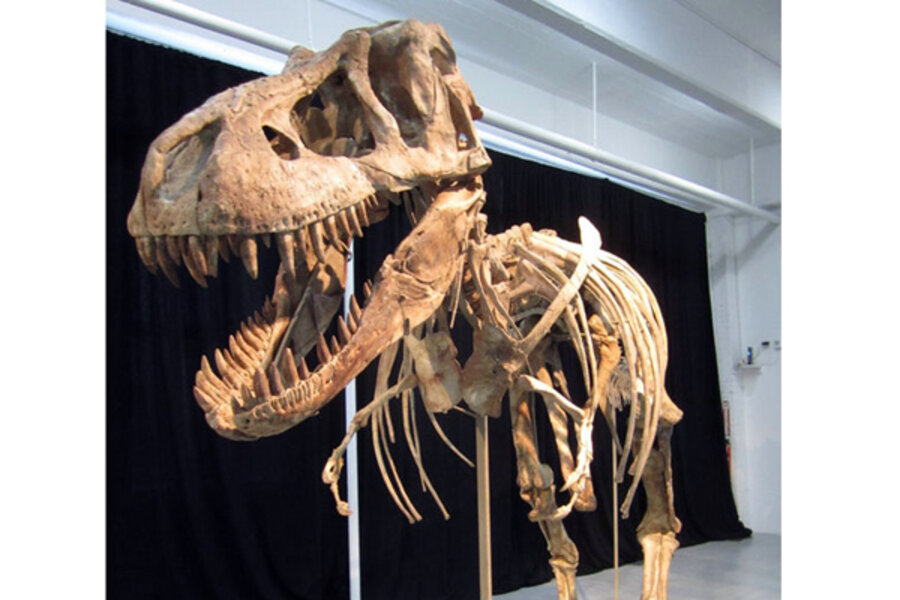Tyrannosaur allegedly smuggled to US to be returned to Mongolia
Loading...
The United States Attorney's office has intervened in a dispute over a dinosaur that went up for auction at the end of May with a demand that the skeleton be turned over to the U.S. government, so that it can be returned to Mongolia.
Paleontologists and Mongolian officials have maintained that the skeleton, which belongs to a type of tyrannosaur called aTarbosaurus bataar, was taken illegally from their country.
"The skeletal remains of this dinosaur are of tremendous cultural and historic significance to the people of Mongolia, and provide a connection to the country's prehistoric past. When the skeleton was allegedly looted, a piece of the country's natural history was stolen with it, and we look forward to returning it to its rightful place," Manhattan U.S. Attorney Preet Bharara said in a statement.
Mongolian President Elbegdorj Tsakhia attempted to hault the auction of the skeleton on May 20, however, the auction house in charge of selling it, Heritage Auctions, went ahead with the sale, making it conditional on court approval. An anonymous bidder has agreed to pay $1.1 million for the dinosaur, which is an Asian relative to the North American Tyrannosaurus rex. [See Photos of the Tarbosaur Skeleton]
Paleontologists believe the Tarbosaurus came from Mongolia, because clearly identifiable remains from this species have been found only in the Nemegt Formation, which is located in Mongolia. The Nemegt Formation is located in Mongolia's portion of the Gobi Desert. Under Mongolian law, vertebrate fossils excavated within its borders are state property.
Heritage Auctions had not yet responded to a request for comment by this morning (June 19). The fossils are currently in its possession, being held in a facility in Queens, N.Y.
The U.S. Attorney's office is demanding forfeiture of the specimen on the basis that those importing it gave false information on customs forms, and that those importing brought it into the United States knowing it had been stolen.
Paleontologists say the poaching of fossils in Mongolia has intensified over the years. Philip Currie, a paleonotologist at the University of Alberta who examined the Tarbosaurus, told LiveScience that based on his own examination of the bones he thinks the specimen was the subject of two rounds of poaching.
Unskilled poachers often take the teeth and the claws off a specimen, leaving or destroying the rest, he said. This Tarbosaurus is missing most of its claws and teeth. The rest of the specimen was removed by excavators with more skill, but even so, the job was not well done, Currie said.
"There is a lot of restoration done on the bones to make them look good, but when you look closely at it you can see there is a lot of plaster restoration towards the ends of the bone, a lot of the processes [protrusions] are broken or chipped off and gone," Currie said this month.
Follow Wynne Parry on Twitter @Wynne_Parry or LiveScience @livescience. We're also on Facebook & Google+.







